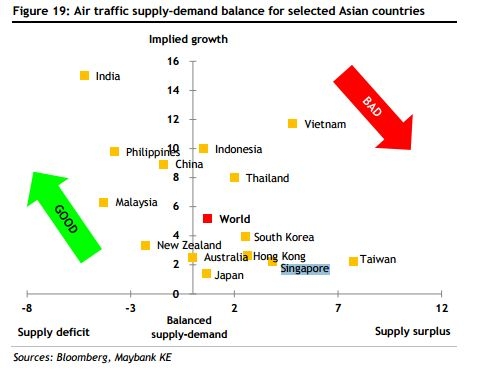
3 signs the Singapore airlines sector is underperforming
Singapore has the oldest fleet in Asia, to begin with.
Yields for Asian airlines have been trending down since 2012, which is perhaps the longest down cycle the industry has ever seen. In the recent 3Q15 results briefing however, Maybank notes that many airline CEOs from selected countries have changed their tone and started giving positive guidance on the forward yield outlook. The countries referenced were Malaysia, Indonesia, India, Australia, New Zealand and the Philippines. But,there are still many countries with negative outlooks. Among them are Singapore, Thailand, Hong Kong, South Korea and Taiwan.
Below are major issues for Singapore:
1.Singapore's flag carrier, Singapore Airlines, is amongst worst performing stock.
Earlier in the year, Maybank expected that the surge in earnings would propel the share prices of all the Asia-Pacific based airlines. This theory turned out to be widely off the mark, as the market was underweight many stocks based on other overriding factors, such as FX depreciation against the USD and airlines with high fuel hedges.
2. Singapore is amongst countries expected to struggle with driving high load factors and also to boost yields.
The countries with the most pronounced demand surplus are India, Malaysia, the Philippines, New Zealand and China. Maybank believes that airlines based in these countries should do well in 2016. On the other hand, countries with the most pronounced surplus capacity are Taiwan,Vietnam, Singapore and Thailand.
3. Singapore has the oldest fleet which in turn a major hurdle in reducing operation cost
The average fleet age for the Asia Pacific and India is 7.0 years as of the end of Nov 2015. This is a major improvement from 11.4 years back at the end of 2010. The Philippines has the youngest fleet age, followed by Malaysia, and Indonesia. Singapore has the oldest fleet, followed closely by South Korea and Hong Kong.
























 Advertise
Advertise






